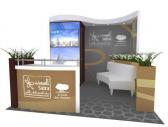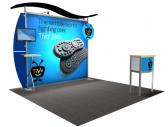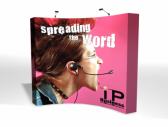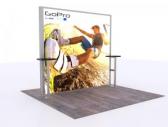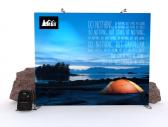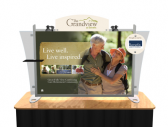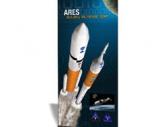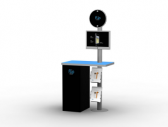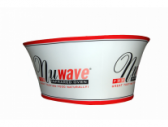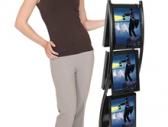24 hour shipping available Last Minute Order?
Building a Better Booth - Design and Planning
A Trade Show Displays Tip:
"Build it and they will come." More than just a line from a Hollywood movie, this phrase should be your mantra when narrowing down your exhibit design search. With a carefully designed booth you stand a much better chance of attracting potential clients, making sales, gathering contacts, and generally spreading the word about your company. Think of your booth as a microcosm of your business. And don't forget the possibility of display rentals too. You can also do a lot of customization through graphics even though you're renting it.
It is best to begin planning at least a year out from the show if your planning to purchase or go with display rentals. Assign one person to be in charge of timetables and scheduling. Assign another person to draw up the budget. This person will have to factor in the cost of renting or buying a booth, the cost of items such as a display booth, kiosks, and literature stands, as well as travel expenses, such as transportation and lodging. Travel costs will of course vary depending upon the location and duration of your stay. You should expect to spend a quarter of your budget on renting your booth space, another twenty percent on display graphics, fifteen percent on things such as electrical and cleaning, ten percent on shipping your materials to and from trade shows, and ten percent on press kits and pre-show promotions. The remaining twenty percent should go to staffing and other miscellaneous booth expenses that may occur.
If you decide to build your own trade show exhibit verses display rentals, you will probably want to hire a booth designer. You will have to observe the rules and regulations on booth design for your particular show as well as observing basics such as fire, electrical, and safety codes and providing wheelchair accessibility.
When considering the dimensions of your booth you will need to take into account the number of staffers you will be using, as well as room for kiosks and displays, and storage of materials. You should have enough space so your staffers are not bumping into one another. A 10 x 10 booth is sufficient for a small business. At 100 square feet, you can accommodate at least four people at once, two staffers and two attendees.
Think of your trade show exhibit as a three dimensional advertisement for your company. You should include your company's colors wherever possible, unless you are using a theme that necessitates certain colors. It is also a good idea to display the company logo as prominently as possible with a purchased booth or with display rentals. You may also want to coordinate the trade show flooring with the rest of your booth. Consider an interlocking cushioned floor for comfort and ease of use.
In order to both conserve space and add an exciting look to your booth, display your literature in a stand alone display, such as a z-fold literature rack. This design has the added advantage of being easy to set up and take down.
Find a way for the show attendees to participate in the booth experience. Think of a way they can participate in a product demo. Use a video kit mounted in your pop-up display to display an interactive video or computer product demo.
Be sure your design allows for free flow of attendee traffic in and around your booth. Remove any obstacles at the designing stage. Kali Pearson, writing in Profit magazine, reminds exhibitors to keep your traffic objective in mind. For instance, if you're there to demonstrate a new product, erect walls that force passers-by to cluster at the front of your booth. Keep your booth from getting too busy and complex, so people are not confused or overwhelmed by your booth. This applies with display rentals too.
Click for additional information on Trade Show Displays
Link to top of the Trade Show Displays Blog

